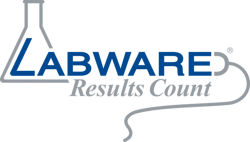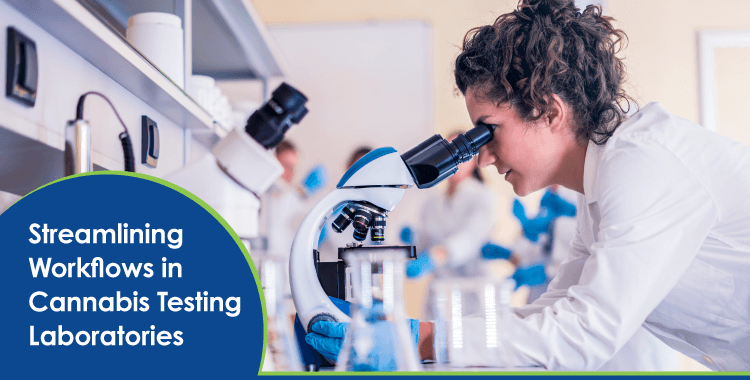
Traceability and quality are indispensable in the realm of laboratory information management systems (LIMS), with a view to sustaining precision and effectiveness across multiple sectors. As technology continues to advance, it is essential for organizations to adopt innovative solutions that enhance their LIMS capabilities, particularly in terms of automating quality assurance processes, improving traceability through barcoding, and generating consistent certificates of analysis.
This blog post will delve into the benefits of automating quality assurance with LIMS by streamlining documentation processes and ensuring accurate data mapping for samples and tests. Additionally, we will explore how enhancing traceability through barcoding can reduce human error in labeling procedures while maintaining comprehensive digital records necessary for audit purposes.
Lastly, we will discuss the importance of generating consistent certificates of analysis as part of your overall LIMS traceability quality strategy. This includes ensuring validation before COA generation and promoting consistent quality control measures across all aspects of your operations.
Automating Quality Assurance with LIMS
In today's fast-paced laboratory environment, maintaining high-quality standards is crucial for the success of any organization. One way to achieve this goal is by implementing a Laboratory Information Management System (LIMS), which can streamline the quality assurance process and ensure that all documentation processes are automated. This not only saves time but also helps laboratories maintain accurate records and adhere to strict regulatory requirements.
Streamlining Documentation Processes Through Automation
The traditional method of manually documenting sample information, test results, and other relevant data can be both time-consuming and prone to human error. By automating these processes through a LIMS solution, laboratories can significantly reduce the risk of errors while increasing overall efficiency. A well-designed LIMS software will automatically collect extensive metadata on factors beyond the standard lifecycle, such as sample numbers, sub-samples, test numbers, equipment calibration status, analyst qualifications, etc., ensuring that every aspect of your lab's operations is accurately documented.
- Data entry automation: With a LIMS in place, manual data entry tasks are minimized or eliminated altogether - reducing transcription errors and improving overall data accuracy.
- Standardized workflows: A LIMS system allows you to create standardized workflows for various testing procedures - ensuring consistency across different analysts and departments within your organization.
- Audit trails: An essential feature of any good LIMS software is its ability to generate comprehensive audit trails that document every action taken within the system - providing complete traceability for regulatory compliance purposes.
Ensuring Accurate Data Mapping for Samples and Tests
Data mapping plays an integral role in the quality assurance process, as it allows laboratories to link metadata collected during testing with specific samples and test results. This is crucial for determining whether a sample meets the required specifications or if further testing is needed. A LIMS solution can automatically map this data to sample numbers, sub-samples, and test numbers - providing an accurate record of all activities related to each individual sample.
Some key benefits of accurate data mapping in a LIMS system include:
- Sample traceability: By linking metadata with specific samples and tests, you can easily track the entire lifecycle of each sample - from collection through analysis and reporting.
- Error reduction: Accurate data mapping helps identify any discrepancies or errors early on in the process - allowing you to address them before they impact your final results.
- Data integrity: Ensuring that all relevant information is accurately linked to each sample ensures that your laboratory's data remains consistent and reliable throughout its various processes.
In addition to streamlining documentation processes and ensuring accurate data mapping, implementing a LIMS solution also provides several other benefits for laboratories looking to enhance their overall efficiency while promoting quality. Some examples include automated instrument integration, real-time monitoring of equipment status, centralized management of reagents and consumables inventory levels, electronic signatures for document approval workflows,
Leveraging Instrument Integration Capabilities
A major advantage offered by many modern LIMS solutions is their ability to integrate directly with laboratory instruments such as spectrophotometers or chromatography systems. This not only eliminates manual transcription errors but also allows labs access real-time updates on equipment calibration status - which plays an essential role in maintaining high-quality standards across different analyses performed within organization.
Saving Time Through Automated Sample Tracking
One of the most time-consuming tasks in any laboratory is tracking samples throughout their lifecycle. With a LIMS system, you can automate this process and ensure that each sample's location and status are accurately recorded at all times. By automating the tracking process, not only can valuable time be saved but errors due to misplaced or mislabeled samples are also prevented.
Maintaining Compliance with Regulatory Requirements
Compliance with regulatory requirements such as FDA 21 CFR Part 11, ISO 17025, or EU GMP Annex 11 is crucial for laboratories operating within regulated industries. A well-implemented LIMS solution will help your organization maintain compliance by providing features such as electronic signatures, audit trails, and secure data storage - ensuring that your lab's operations adhere to the highest quality standards.
In conclusion, automating quality assurance processes through a Laboratory Information Management System (LIMS) offers numerous benefits for laboratories looking to enhance efficiency while maintaining high-quality standards across their various activities. By streamlining documentation processes, ensuring accurate data mapping for samples and tests, leveraging instrument integration capabilities - among other advantages - implementing a LIMS solution can significantly improve overall laboratory performance without compromising on quality control measures essential for success in today's competitive market landscape.
By automating quality assurance processes with LIMS, organizations can reduce human error and streamline documentation procedures. Moving forward, barcoding technology can be used to further enhance traceability by maintaining comprehensive digital records for audit purposes.
Key Takeaway: Implementing a Laboratory Information Management System (LIMS) can automate quality assurance processes, streamline documentation procedures, and ensure accurate data mapping for samples and tests. Leveraging instrument integration capabilities, saving time through automated sample tracking, and maintaining compliance with regulatory requirements are some of the benefits that LIMS offers to laboratories looking to enhance their overall efficiency while promoting quality.
Enhancing Traceability Through Barcoding
One effective way to achieve this is by integrating barcode technology into laboratory information management systems (LIMS). This powerful combination significantly reduces sample errors and misidentification by eliminating human errors in manual labeling processes. In this section, we will discuss how barcoding enhances traceability within LIMS, leading to improved efficiency and quality control.
Reducing Human Error in Labeling Procedures
Manual labeling of samples can be time-consuming and prone to mistakes due to illegible handwriting or incorrect transcription. These issues not only compromise the integrity of the sample but also lead to costly delays in processing and analysis. By implementing barcode technology with a LIMS solution, laboratories can automate their labeling procedures, thus reducing human error.
A barcode system generates unique identifiers for each sample that are easily scanned using handheld devices or automated scanners connected directly to the LIMS software. The data captured from these scans includes essential information such as sample ID numbers, test parameters, collection dates, storage conditions, etc., which are automatically logged into the system without any need for manual input.
- Faster processing: Barcode scanning speeds up data entry while minimizing errors associated with manual transcription.
- Better organization: Barcoded labels help keep track of inventory levels more efficiently than traditional handwritten labels or spreadsheets alone.
- Improved accuracy: Barcode technology ensures that each sample is correctly identified and tracked throughout its lifecycle, reducing the risk of misidentification or lost samples.
Maintaining Comprehensive Digital Records for Audit Purposes
Laboratories must maintain detailed records of their activities to ensure compliance with regulatory requirements and industry standards. A LIMS solution equipped with barcode scanning capabilities allows laboratories to create a comprehensive digital record of all sample tracking and testing activities, making it easier to access information during audits or inspections.
The traceability provided by barcoding within a LIMS system helps demonstrate adherence to Good Laboratory Practices (GLP), which are essential for maintaining accreditation and ensuring data integrity. In addition, having an easily accessible digital archive enables labs to respond quickly to any inquiries from regulatory bodies or clients regarding specific samples or tests conducted in the past.
- Easier retrieval: Searching through physical logbooks can be time-consuming; however, digital records stored within a LIMS make it simple for lab personnel to locate relevant information on-demand using search functions built into the software.
- Better security: Storing data electronically reduces the risk of unauthorized access compared with paper-based systems while also protecting against loss due to natural disasters such as fires or floods.
- Informed decision-making: Having complete visibility over historical data allows laboratory managers and stakeholders alike to make more informed decisions based on trends observed over time - this could include optimizing workflows, identifying bottlenecks in processes, etc.
Achieving End-to-End Traceability Through Barcoding Integration
To maximize the benefits offered by barcoding technology, it is essential to integrate it seamlessly into all aspects of the laboratory workflow. This end-to-end traceability ensures that each step in the sample's lifecycle - from collection and storage to analysis and reporting - is accurately recorded without discrepancies.
For example, a LIMS solution with barcode scanning capabilities can be used for:
- Sample receipt: Upon arrival at the lab, samples are scanned into the system, automatically creating a digital record of their origin and any associated metadata (e.g., client information).
- Storage management: Barcoded labels on storage containers help track inventory levels more efficiently while also providing real-time updates on sample locations within freezers or other storage units.
- Instrument integration: Barcode scanners connected directly to analytical instruments ensure accurate data transfer between devices and eliminate manual transcription errors during testing procedures.
- Data analysis & reporting: By linking results directly back to individual samples via their unique barcodes, laboratories can generate reports faster while maintaining full traceability throughout the entire process.
In conclusion, integrating barcode technology with laboratory information management systems significantly enhances traceability across all stages of testing. By automating labeling procedures and maintaining comprehensive digital records for audit purposes, labs can improve efficiency while promoting consistent quality control measures. As a result, implementing this powerful combination offers numerous benefits for both regulatory compliance and overall operational excellence within modern laboratories.
By implementing barcoding, traceability is improved and human errors are reduced in the labeling process. Additionally, with consistent quality control measures and validation before COA generation, generating Certificates of Analysis (COA) becomes more reliable.
Key Takeaway: Integrating barcode technology with LIMS can significantly reduce sample errors and misidentification by automating labeling procedures, leading to improved efficiency and quality control. Barcoded labels help keep track of inventory levels more efficiently than traditional handwritten labels or spreadsheets alone while maintaining comprehensive digital records for audit purposes. End-to-end traceability ensures that each step in the sample's lifecycle is accurately recorded without discrepancies.
Generating Consistent Certificates of Analysis (COA)
In today's competitive market, maintaining high-quality standards is essential for laboratories to ensure customer satisfaction and regulatory compliance. One critical aspect of quality control in the laboratory environment is generating consistent Certificates of Analysis (COAs). A COA serves as proof that a product meets its required specifications; however, generating these documents manually can lead to inconsistencies across different batches or products. With a Laboratory Information Management System (LIMS) in place, COAs are generated automatically after validating each sample against its predetermined specifications - this ensures consistency across all laboratory processes while promoting high-quality output from every stage within the lab's workflow.
Ensuring Validation Before COA Generation
A key component of producing accurate and reliable COAs is ensuring that samples undergo proper validation before their analysis results are documented. This process typically involves comparing test results with established acceptance criteria to determine if the sample meets the necessary requirements for use or sale. When using manual methods for validation, there may be room for human error or misinterpretation of data, leading to inaccurate conclusions about product quality.
LabWare LIMS, on the other hand, automates this crucial step by integrating predefined acceptance criteria directly into the system. As soon as testing is complete and results are entered into LIMS software, they're immediately compared against these preset parameters. If any discrepancies arise between test outcomes and acceptable ranges during this comparison process, users will be alerted so that corrective action can be taken promptly.
- Reduced risk: Automated validation minimizes human error by eliminating manual calculations and comparisons, leading to more accurate and consistent COAs.
- Increased efficiency: With LIMS software, validation occurs in real-time as test results are entered into the system, streamlining the overall quality control process.
- Better traceability: The entire validation history is stored within the LIMS database, providing a clear audit trail for regulatory compliance purposes.
Promoting Consistent Quality Control Measures
In addition to ensuring proper sample validation before generating COAs, implementing a LIMS solution can also help promote consistency across all aspects of laboratory quality control. By automating various processes and workflows throughout the lab environment, laboratories can minimize human error while maintaining high standards of accuracy and precision. Some ways that LabWare LIMS contributes to consistent quality control measures include:
- Data integrity assurance: A robust data management system ensures that all information related to samples, tests, and results is securely stored and easily accessible when needed. This includes features such as version tracking for documents like standard operating procedures (SOPs) or method specifications - this helps ensure that only current versions are used during testing activities.
- Audit trails & electronic signatures: Comprehensive audit trails record every action taken within the system by each user; these logs provide valuable insight into laboratory operations over time while also serving as evidence of compliance with regulations like FDA's Title 21 CFR Part 11 or EU's Annex-11 guidelines regarding electronic records management. Additionally, digital signature capabilities enable users to sign off on critical tasks electronically - further promoting accountability throughout all stages of production.
- Trending & statistical analysis tools: Laboratory Information Management Systems often come equipped with advanced analytics functionalities that allow users to monitor trends in test results, identify potential issues before they escalate, and make data-driven decisions about process improvements. By utilizing these tools, laboratories can maintain a proactive approach to quality control while continuously striving for excellence.
By automating the generation of Certificates of Analysis through a LIMS solution like LabWare's platform, laboratories can ensure that their products consistently meet required specifications while also streamlining overall operations. From validating samples against predefined acceptance criteria to promoting consistent quality control measures across all aspects of laboratory processes, implementing an advanced LIMS system is an essential investment for any organization looking to enhance its competitive edge in today's fast-paced market landscape.
Key Takeaway: LabWare LIMS automates the process of generating consistent Certificates of Analysis (COAs) by validating each sample against its predetermined specifications, ensuring consistency across all laboratory processes. Automated validation minimizes human error and promotes better traceability while also contributing to consistent quality control measures through data integrity assurance, audit trails & electronic signatures, and trending & statistical analysis tools.
FAQs in Relation to Lims Traceability Quality
How LIMS Ensures Traceability
Laboratory Information Management Systems (LIMS) ensure traceability by maintaining a comprehensive digital record of all sample information, test results, and associated metadata. This includes automating data entry through barcoding and accurate data mapping for samples and tests. By reducing human error in labeling procedures, LIMS provides an efficient way to track the entire lifecycle of each sample.
LIMS as a Quality System
Yes, LIMS is considered a quality system as it streamlines documentation processes through automation while promoting consistent quality control measures. It helps laboratories maintain compliance with regulatory standards such as ISO 17025 or GxP requirements by providing real-time monitoring of laboratory operations and ensuring validation before generating Certificates of Analysis (COA).
The Importance of Quality Control in LIMS
Quality control is necessary in LIMS to ensure that laboratories produce reliable and accurate results consistently. Implementing strict QC measures within the system allows labs to identify potential errors early on, preventing costly retesting or incorrect conclusions from being drawn based on inaccurate data. Quality control also plays a crucial role in maintaining regulatory compliance.
The Significance of Traceability in a Laboratory
Traceability is essential in a laboratory because it enables tracking the history, location, usage, testing process/results for each sample throughout its lifecycle. This ensures transparency during audits or investigations into possible discrepancies/errors related to specific samples/tests performed within the lab environment (source).
Conclusion
In conclusion, implementing a Laboratory Information Management System (LIMS) can greatly enhance traceability and quality in laboratories. Automating quality assurance processes through LIMS streamlines documentation and ensures accurate data mapping for samples and tests. Barcode labeling reduces human error and maintains comprehensive digital records for audit purposes. Consistent Certificates of Analysis (COA) are generated through validation and promote consistent quality control measures.
LIMS Traceability Quality is essential to maintaining high standards in laboratory operations. To learn more about how LabWare's LIMS solutions can benefit your lab, visit LabWare.
















